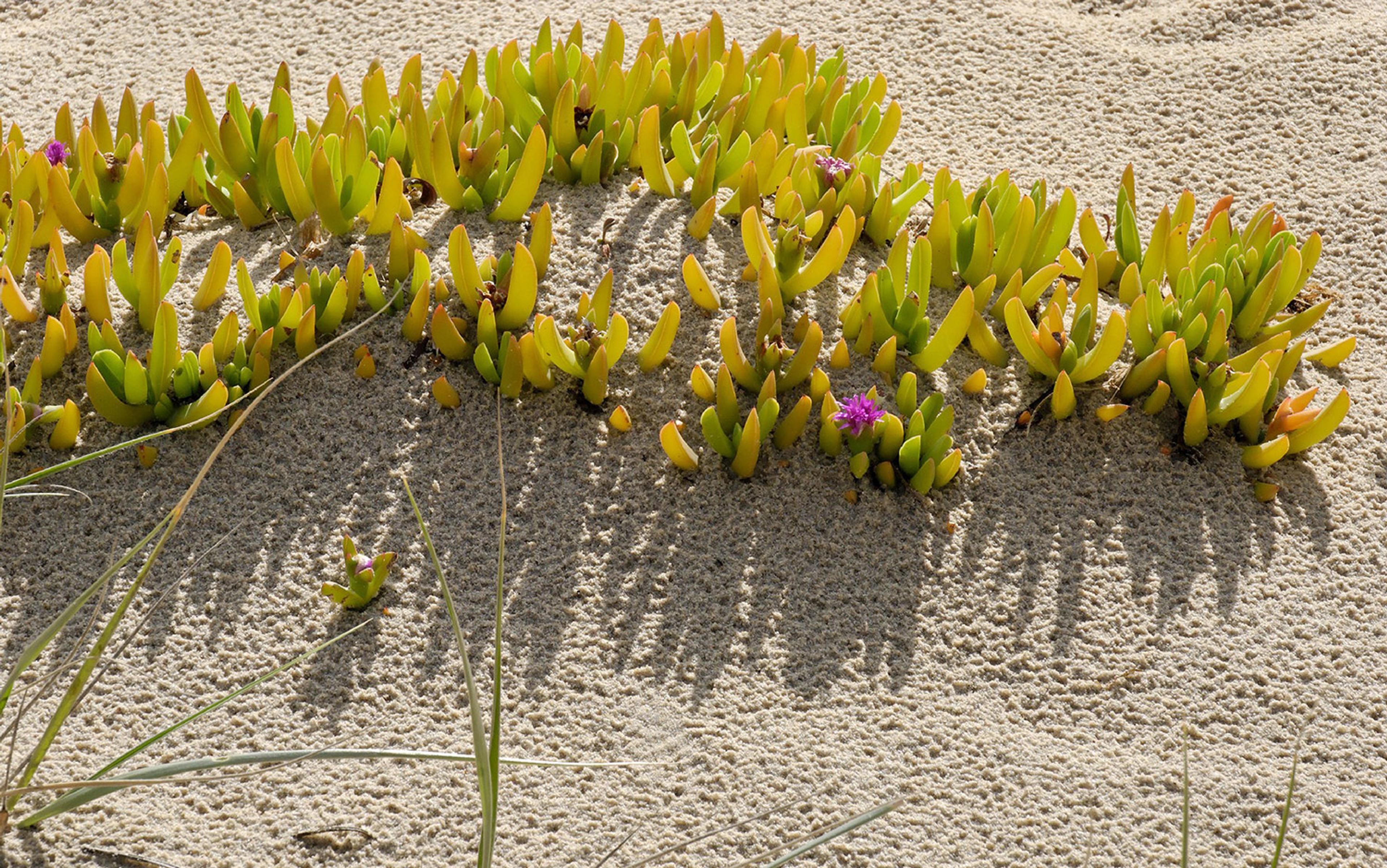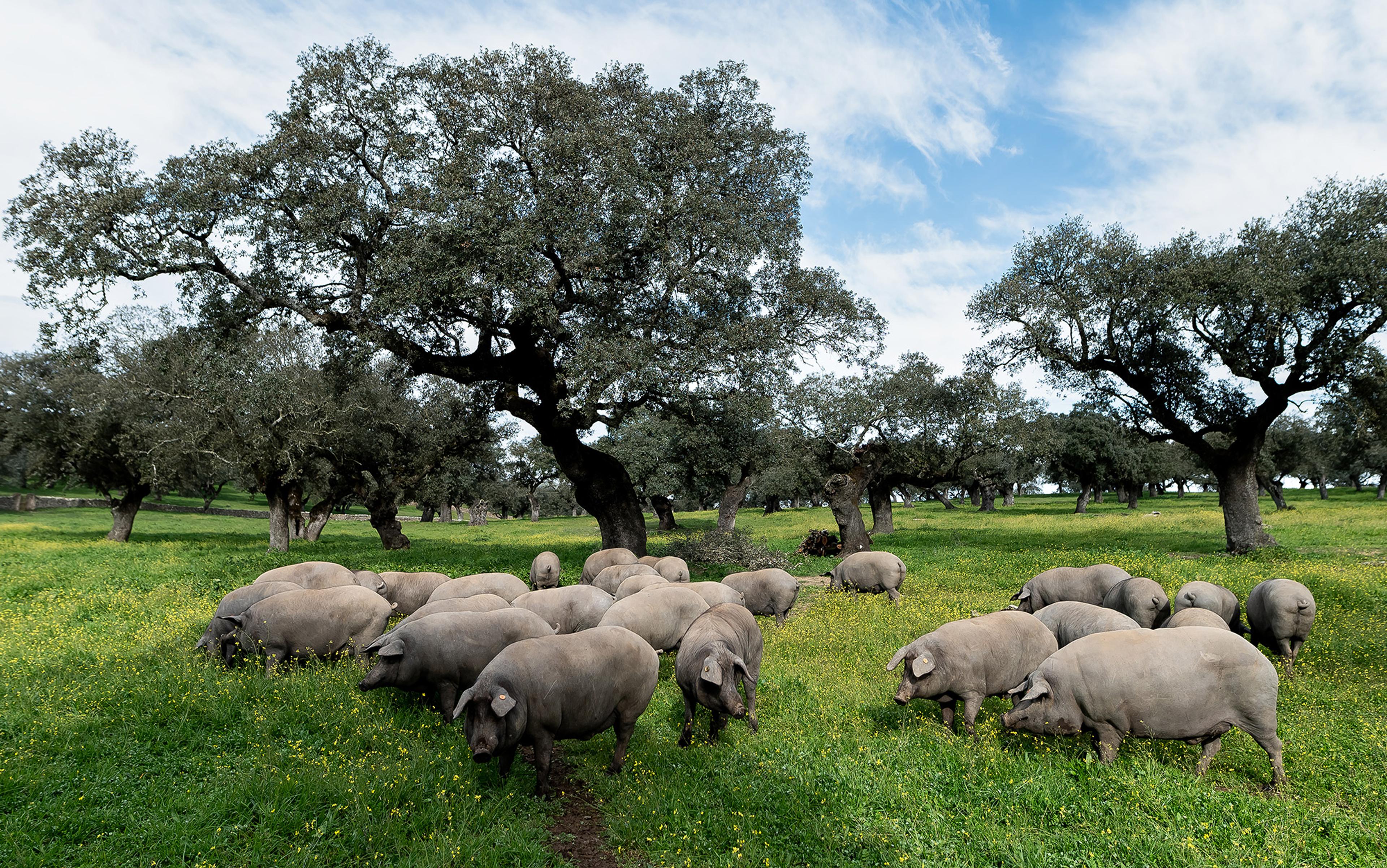Ever since ancient times, the sowing of salt has been synonymous with severe and deadly retribution. The Roman general Scipio Africanus the Younger was said to have ended the Third Punic War in 146BC by razing Carthage, enslaving its population and spreading salt on its fields. In the biblical book of Judges (9:45), the brutal and unprincipled King Abimelech laid siege to the Canaanite city of Shechem. ‘He took the city,’ the biblical story says, ‘and slew the people that was therein, and beat down the city, and sowed it with salt.’
Salt kills most plants. In fact, it attacks them in much the same way that carbon monoxide kills humans. In cases of carbon monoxide poisoning, CO molecules exhaust the carrying capacity of your red blood cells, depriving your body of the oxygen it needs. Likewise, most terrestrial plants soak up the sodium ions and sodium chloride from salt much faster than they can absorb essential nutrients such as potassium, calcium and magnesium. Without those nutrients, they perish. Spread salt on the fields of your enemies and their crops will fail.
More than 97 per cent of the water on Earth is saline. Wouldn’t it be cruel if nature had locked up the vast bulk of the planet’s vital fluids in a form that no plant could drink? Well, as it happens nature is not quite that cruel. Of the 400,000 flowering plant species around the world, 2,600 do drink seawater. They are halophytes, meaning ‘salt-plant’, and they might just be the answer to a question surprisingly few governments have yet asked: namely, how can we put our planet’s practically infinite volumes of saltwater to good use?
It might not be immediately obvious why such a question is worth our time. But consider: between sea-level rise and the increase in droughts and floods, the acreage available for conventional, freshwater agriculture is shrinking rapidly. Freshwater aquifers are becoming increasingly salty: among them, the Ogallala Aquifer, which covers a quarter of the irrigated land in the US. And so one of the world’s most important breadbaskets is under threat. Elsewhere, one-sixth of the world’s population relies on Eurasian rivers that trace back to Himalayan glaciers, which are themselves disappearing because of climate change.
While the global supply of arable land is shrinking, demand keeps rising. The United Nations has calculated that, if we are to feed the 9 billion people on Earth by the middle of this century, we will have to increase agricultural productivity by as much as 70 per cent. How on earth are we going to do that? Perhaps we’ll discover some ultra-productive new crops or farming techniques; we’ve been lucky before. But even if we manage that, our crops will still have to withstand the projected spike in extreme weather caused by climate change.
Meanwhile, we are trying to replace our fossil fuels with bio alternatives. The trouble with fossil fuels, you might or might not be aware, is the ‘fossil’ part: burning them returns a lot of carbon into the atmosphere that had been locked away underground for millions of years. Biofuels, by contrast, are made from plants whose carbon was for the most part only recently pulled out of the air, so they don’t increase the atmospheric carbon count by very much. That is to say, we need them. The only catch is, they come from plants that also have to be grown and cultivated. With limited arable land and increasingly limited freshwater supplies, conventional biofuel crops have to fight for space with our own food and water. Whichever way you cut it, we are running out of land.
Enter halophytes. Edward Glenn, an environmental scientist at the University of Arizona, has been promoting the plants for the best part of two decades. Above all, he sees them as an effective way to tackle climate change itself. Deforestation generates an astonishing 20 per cent of greenhouse gas emissions today – exceeding the total carbon emissions from all cars, trucks, ships and planes around the world – and most felling takes place in order to clear ground for freshwater agriculture. ‘If you can develop new cropland using seawater and saline water and coastal deserts,’ Glenn explains, ‘and preserve all those forested lands, that’d really make a contribution to the carbon balance and climate change.’
Dennis Bushnell, chief scientist at NASA’s Langley Research Center, has been working on his own high-level analysis, and he shares Glenn’s enthusiasm for the plants, though he emphasises another aspect of the overall picture. Bushnell is one of the agency’s ‘big thinkers’, concerned not only with rocket launches but also with global-scale problems. He predicts that by developing saline agriculture on waste ground, we could get our water issues under control within ‘15 to 20 years’, freeing up as much as 70 per cent of the water that we’re using now for conventional farming. ‘The beauty of halophytes,’ says Bushnell, ‘is you can do it wherever you have wastelands and some saline water. We have a surfeit of that.’
Encouraging as these global estimates might be, what the halophyte campaign really needs are concrete business proposals. So how about this one: according to researchers at the University of Delaware, a perennial species called seashore mallow (Kosteletzkya pentacarpos) could work in desert and salty-soil regions of North America, the Middle East, southeast Asia and western Australia. Seashore mallow can grow in salty soil, using saltwater irrigation. It is non-invasive and tolerant of both droughts and waterlogging. And its seeds are 18-20 per cent oil, making it a plausible biofuel candidate.
‘It’s taken 8,000 years to evolve corn from wild grass in the Mexican highlands to the Iowa cornfields. I just don’t have that long’
Those researchers are John Gallagher and Denise Seliskar – respectively, professor and research scientist at Delaware’s College of Earth, Ocean and Environment. They have been championing seashore mallow for many years. Last year they published a paper in the journal Renewable Energy, co-written with a group from the US Department of Agriculture, that analysed the plant’s potential as a biodiesel and ethanol source. By their calculations, it comes out roughly on par with soybeans, one of the commonest sources of biofuel now in use. A second paper, in Biomass and Bioenergy, examined the perennial’s stems’ absorbency, revealing commercial potential as mulch, erosion control and even kitty litter and animal bedding.
That variety of applications is important. ‘The thing that became apparent to us is it wasn’t going to run economically just on the oil you squeezed out of it,’ Gallagher says. ‘It’s taken 8,000 years to evolve corn from the teosinte [wild grass] found in the Mexican highlands to the Iowa cornfields. I just don’t have that long. So we thought we’d try to come up with an array of things we can get from the plant.’ Gallagher and Seliskar estimate that the entire crop can be harvested for products that could compete with existing markets of conventionally farmed commodities. The absorbency of its inner stem makes it attractive for animal bedding, while the outer bark has been developed into a thread for cloth. The seed, as noted, is a promising stock for ethanol and biodiesel. And the seedmeal offers a spread of amino acids that make it attractive as animal feed. Roots, spent flowers and the biopolymers in the plant are also being investigated for everything from gums to industrial chemicals.
It’s pretty straightforward to cultivate, too. According to the sales pitch that the duo sends out to interested farmers, this wild cousin of cotton is at home in brackish marshes and has adapted to both soggy and salty soils. That means it might be worth considering for farmers near estuaries, for instance, or near ocean dunes or deltas that are becoming too saline for traditional crops. Planting, they say, requires only the same row planter used for soybeans or corn. Harvesting can be done with traditional tools such as a combine harvester. It sounds almost too good to be true, doesn’t it? Farmers should be beating down their door.
And yet, somehow they aren’t.
In fact, despite the halophyte family’s dazzling promise, its champions have had to be remarkably patient. The catch, says Jeannette Hoek, president of the company OceanDesertFood in the Netherlands, is creating a demand in the marketplace for halophyte food, fodder and products. Hoek’s company contracts with halophyte farmers in Mexico who grow a vegetable called salicornia, also known as glasswort or pickleweed. It looks something like a green bean crossed with a stalk of asparagus, and has become a favourite of food bloggers and locavore enthusiasts. It is, of course, rather salty. OceanDesertFood makes salicornia crackers, as well as seaweed chips. ‘These things build a market,’ she says. ‘And as soon as the farmers see they can sell something, they will do it. But as long as they don’t see that, they will be very hesitant.’
Edward Glenn was beating the halophyte drum fully 16 years ago, notably talking up the advantages of saltwater agriculture in a landmark 1998 article for Scientific American. Today, he says he’s not surprised that the ambitious changes he and his co-authors proposed – greening the world’s deserts, transforming lands with brackish water tables into sites of commercial agriculture – have not yet come to pass. ‘These kinds of changes take much longer than people think they’ll take,’ he says. ‘But if you develop the technology and the resources – and there’s a place for them – eventually they’ll be utilised.’ Agriculture, after all, is as old as human civilisation. Perhaps it has earned the right to be a slow-moving industry.
Even so, there are some peculiarly modern reasons why uptake should be slow. The greatest opportunity for halophytes, both commercially and environmentally, is fuel. But bringing halophyte biofuel up to commercial scale would require the support of big energy – and perhaps big agribusiness – corporations. ‘The oil companies would have to become agriculturalists instead of hole drillers,’ says NASA’s Bushnell. This, of course, would take them a long way out of their comfort zones. ‘We have had contacts with several big corporations,’ says Bushnell. ‘And my impression of the big energy companies is they’re trying to squeeze the last dollops of profit out of their sunk costs and investments. However, in the back room they’re like the duck, paddling like hell underwater, trying to make sure they’re on to the next thing. So they are looking at this.’
‘You’re not going to get running on halophytes in two to three years. But in five to 10 years? Absolutely positively’
J Alan Weber is the vice president of MARC-IV, a Missouri-based biofuel consulting firm. Though seashore mallow hasn’t yet secured much in the way of attention and research funding, it remains, in his opinion, a promising biodiesel and ethanol feedstock. But how to help it break through? ‘You probably wouldn’t anticipate seeing mallow grown on acres in Indiana,’ he says. On the other hand, ‘change the story, and start talking about a piece of ground that is high in salinity, where other crops wouldn’t perform very well, then the economics change.’ In the meantime, pilot programmes on non-traditional farmlands might draw in the research dollars. Weber recommends trials on federal lands, military bases, highway right-of-ways, or municipal county lands such as airports.
Air travel, in fact, might just be the factor that forces the issue. In 2015, the world’s airplanes are projected to consume 75 billion gallons of jet fuel, and consumption is expected to keep growing some 3-4 per cent per year through the next two decades. At NASA’s Glenn Research Center in Cleveland, Ohio, Bilal Bomani runs the Green Lab, a research and teaching lab that investigates both halophyte- and algae-based biofuels in aviation. He guesses that actual shortages will drive the industry to look to new resources. ‘We do not have fuel that will sustain us for the next 50 years,’ Bomani says. ‘You’re either going to do it now, or you’re going to be forced to do it later. And it’s a longer-term process. You’re not going to get running on halophytes in two to three years. But in five to 10 years? Absolutely positively.’
As far as Edward Glenn is concerned, the situation reminds him of another saltwater venture that no one paid attention to, until suddenly it took over its industry. In the late 1970s, he was working at a pilot shrimp farm in Mexico. ‘Us postdocs would get together in the evenings and say: ugh, this is hopeless – this aquaculture is never going to replace wild fisheries,’ he recalls. ‘But now aquaculture is a multi-multi-multi billion dollar industry around the world. And it’s where most of the world’s shrimp comes from. So change is slow, but it’s possible.’
Indeed, Glenn points to a possible synergy between aquaculture and halophyte agriculture. Shrimp farms produce copious amounts of ‘effluent’ – waste-laden water from the shrimp. This water can be a toxic hazard if it’s just dumped back into the ocean or back into the shrimp ponds. ‘You pump the water out of the ocean – or out of wells near the ocean – and you grow your shrimp,’ he says. ‘They require quite a bit of turnover of water to keep them healthy and growing. And you have to do something with the effluent water.’ The problem is that the effluent is also saltwater, which makes it useless for nearly any conventional agricultural use: crops choke on it as we would on carbon monoxide. But for halophyte-based agriculture, it is perfect: free irrigation plus free fertiliser. This opens the door for a symbiotic relationship that, Glenn says, shrimp farms in southeast Asia in particular have now begun to look into.
Even if halophytes do take off, we should temper our optimism. If there’s any single lesson to draw from the many problems that climate change poses, it’s that any single lesson is deceiving. There is no magic switch to make it all go away, and halophytes won’t save the planet any sooner than solar power, fuel cells or genetic engineering.
All the same, as a key that unlocks agriculture across four-tenth’s of the world’s land mass, they clearly deserve our close attention. Salted fields were synonymous with severe and deadly retribution, and it’s common today to think of climate change in similar terms: a harsh punishment for human hubris. Well, we might not be able to escape what’s coming to us altogether, but we should learn to roll with the punches.






